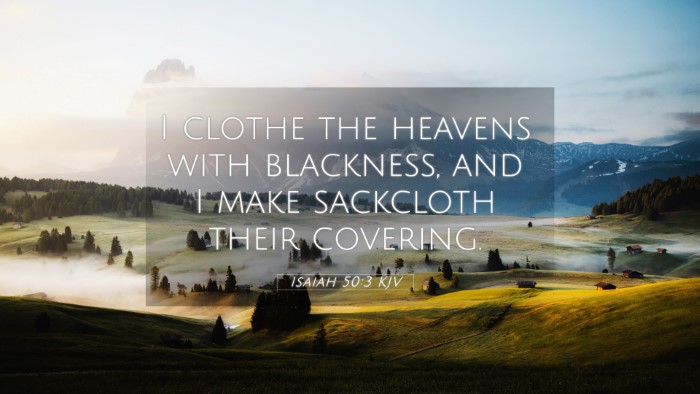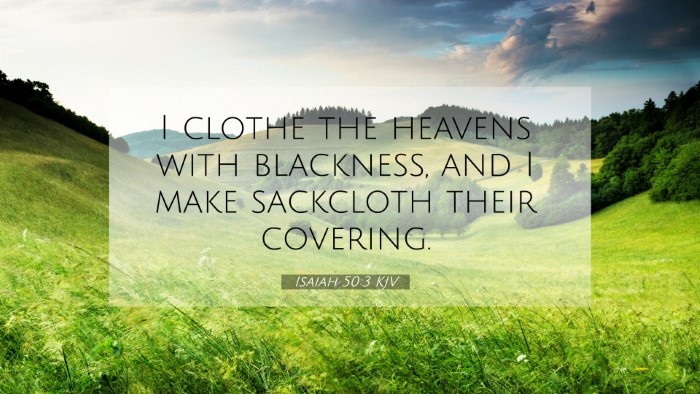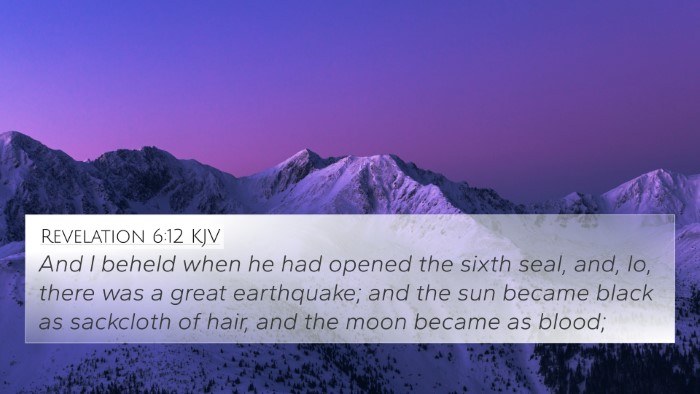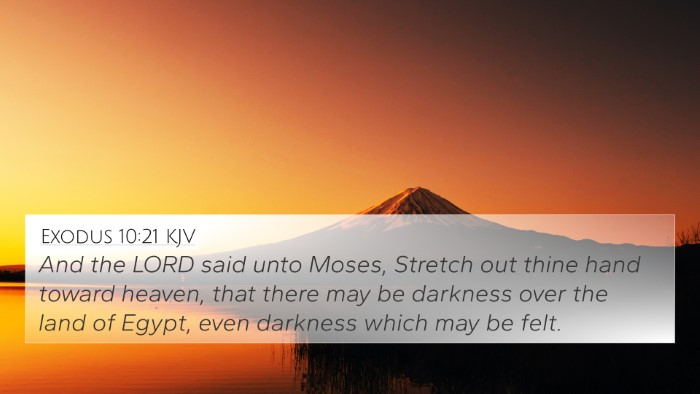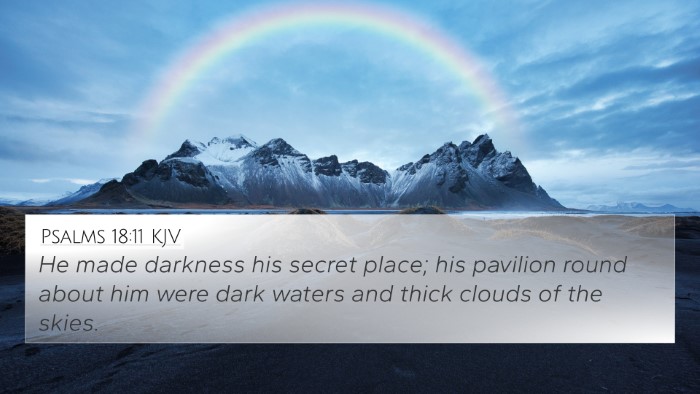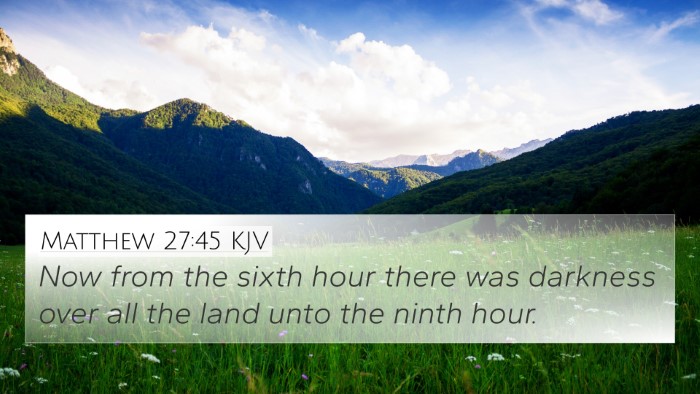Understanding Isaiah 50:3
Verse: "I clothe the heavens with blackness, and I make sackcloth their covering." (Isaiah 50:3)
Overview
Isaiah 50:3 presents a vivid image of God's sovereignty and power over creation. In this verse, the overarching themes of darkness and lamentation are emphasized, signifying a divine response to human rebellion and the need for repentance. The prophet Isaiah uses potent imagery to communicate a deeper message concerning Israel and the impending judgment, while also hinting at the hope for restoration.
Commentary Insights
Matthew Henry: Henry points out that the phrase "I clothe the heavens with blackness" metaphorically illustrates God's authority to impose judgment upon the world, particularly during times of idolatry and sin. The use of sackcloth symbolizes mourning, indicating that God feels sorrow for the state of Israel, yet is still in control of their fate.
Albert Barnes: Barnes elaborates on the nature of divine judgment and the potential for restoration. He argues that although God prepares darkness as a response to disobedience, this is ultimately a call for repentance, inviting the people back to a relationship with Him. Barnes emphasizes the duality of God's character, as both just and merciful.
Adam Clarke: Clarke provides a historical context, explaining how this verse relates to the socio-political climate of Israel during Isaiah’s time. He notes that the imagery of darkness served as a warning about the consequences of straying from God's commandments. Clarke also highlights parallels between this verse and the prophetic literature, reinforcing the consistent theme of divine discipline followed by the promise of restoration.
Bible Verse Cross-References
Isaiah 50:3 can be enriched by cross-referencing several related verses:
- Amos 5:20: "Shall not the day of the Lord be darkness, and not light?" - Reflecting on the theme of impending divine judgment.
- Joel 2:31: "The sun shall be turned into darkness, and the moon into blood... before the great and terrible day of the Lord comes." - Another correlation with darkness and divine intervention.
- Matthew 27:45: "Now from the sixth hour there was darkness over all the land unto the ninth hour." - Demonstrates a key New Testament parallel illustrating God’s judgment during the crucifixion.
- Exodus 10:21-22: "And the Lord said unto Moses, Stretch out thine hand toward heaven, that there may be darkness over the land of Egypt..." - God's power to envelop creation in darkness.
- Isaiah 58:5: "Is it such a fast that I have chosen... to bow down his head as a bulrush, and to spread sackcloth and ashes?" - Further emphasis on sackcloth as a sign of mourning and repentance.
- Matthew 24:29: "Immediately after the tribulation of those days shall the sun be darkened…" - Apocalyptic literature illustrating the cosmic response to human disobedience.
- Job 30:28: "I went mourning without the sun: I stood up, and I cried in the congregation." - An echo of mourning in lamentation contexts.
Thematic Connections
The themes of darkness and mourning in Isaiah 50:3 resonate throughout the Bible. They connect with warnings to Israel, calling them to turn from their wicked ways and return to faithfulness. This verse serves as a reminder of the consequences of sin while simultaneously offering hope through repentance and restoration.
Conclusion
Isaiah 50:3 encapsulates significant theological themes surrounding judgment, repentance, and God's sovereignty. This verse invites readers to reflect on their relationship with God and the importance of returning to Him in times of darkness. The use of sackcloth symbolizes a need for humility and earnestness in seeking God's mercy. The cross-references provided enhance the biblical narrative, demonstrating the interconnected nature of Scripture and how one verse can deepen the understanding of another.

